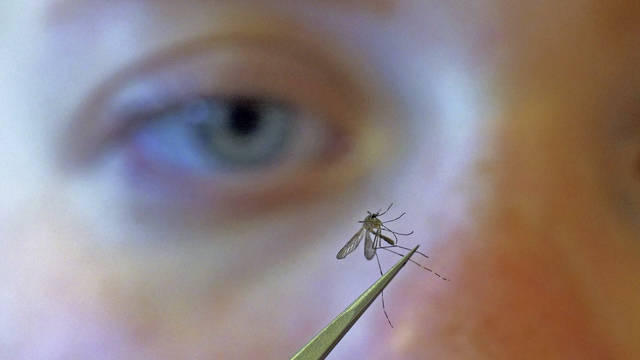https://triblive.com/news/pennsylvania/pa-sees-1st-west-nile-case-of-the-year-in-potter-county/
Pa. sees 1st West Nile case of the year in Potter County

Pennsylvania recorded its first probable human case of West Nile Virus this year, according to state health officials.
A resident of Potter County was tested for the virus, with samples sent to the Centers for Disease Control and Prevention for confirmation.
The state recorded seven cases of West Nile in 2019, according to the CDC. None were fatal.
“While we encourage Pennsylvanians to enjoy the outdoors, especially during the covid-19 pandemic, we also want them to take proper precautions from mosquitoes while outside,” Secretary of Health Dr. Rachel Levine said. “With the first human case of West Nile Virus detected, we want people to protect themselves. Several simple steps can help protect yourself and loved ones from mosquito-related diseases.”
Although mosquitoes can bite at any time of the day or night, the mosquitoes that transmit West Nile are most active at dawn and dusk.
When outdoors, people can avoid mosquito bites by properly and consistently using DEET-containing insect repellents and covering exposed skin with lightweight clothing. To keep mosquitoes from entering a home, make sure window and door screens are in place and are in good condition.
DEP officials monitor mosquito populations across the state for the presence of West Nile.
Only one in 150 people infected with West Nile will develop severe illness, health officials said. Associated symptoms include disorientation, convulsions, headache, high fever, muscle weakness, blindness, numbness, coma, paralysis and tremors.
Roughly 80% of infected people will not show any symptoms, according to health officials.
West Nile was traditionally only seen in Africa, West Asia and the Middle East throughout most of the 20th century. In the summer of 1999, it was detected in New York City and, over the next four years, spread throughout North America.
Since 2004, West Nile epidemics flare up in summer and fall as infected mosquitoes spread the virus from birds to horses, humans and other animals.
Copyright ©2025— Trib Total Media, LLC (TribLIVE.com)
